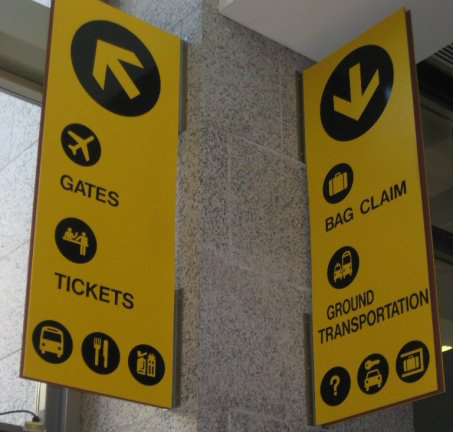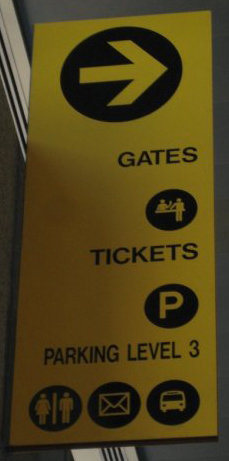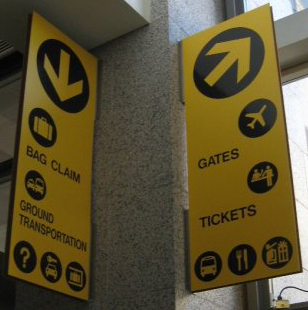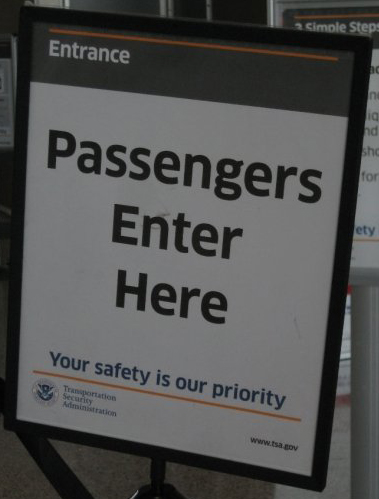


Airports are difficult to avoid when you need to travel long distances. The institution of airports and their implications as power structures is revealed through the variety of signs, pictures, and directions as they guide their passengers from one place to another. The co-construction of the people that move through and the images of the Austin-Bergstrom International Airport introduces not only the power the images get from their necessity, but also presents how they assume, identify, and guide the passengers and visitors that move through it. The institution of the airport allows the ability to change the definition of the people to passengers because the people have given them this power. This is also why the images and symbols must be so vague in some respects: so many people have given power to this institution and its technologies that to specify the symbols would be to exclude some while including others, something that airports could not prosper while doing. In balancing the use of power and the self-advertisement of the airport, the Austin-Bergstrom International Airport's signs present a playground for theory, analysis, and contemplation in today's semiotic and anthropological analysis.


Starting Analysis
a class taught by Bob Bednar in the Communication Studies Department at Southwestern University
